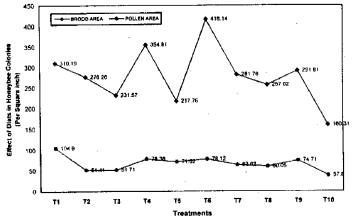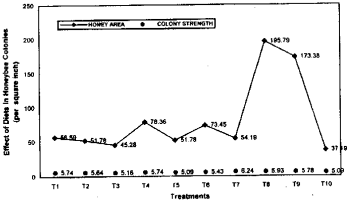Research Article
Effect of Some Pollen Substitute Diets on the Development of Apis mellifera L. Colonies
Beekeeping and Hill Fruit Pest Research Station, Rawalpindi.
Anjum Suhail
Department of Agriculture Entomology, University of Agriculture, Faisalabad, Pakistan
Waseem Akram
Department of Agriculture Entomology, University of Agriculture, Faisalabad, Pakistan
Ghulam Sarwar
Department of Agriculture Entomology, University of Agriculture, Faisalabad, Pakistan
Muhammad Saleem
Agricultural Officer, Quetta, Pakistan










